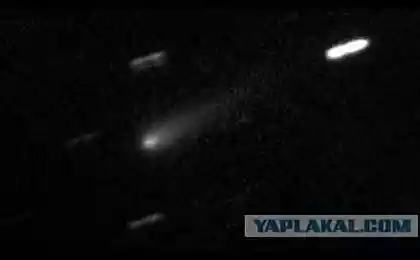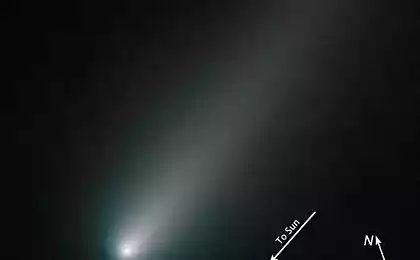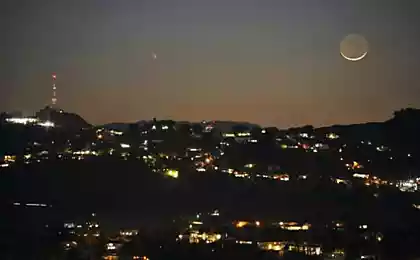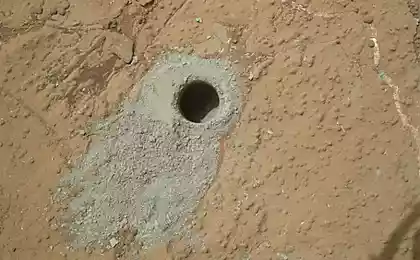569
Discovered a comet with ethanol and sugar

Astrophysicists made an unexpected discovery . For the first time in the composition of the comet discovered such organic substances such as ethyl alcohol (C 2 sub> H 5 sub> OH) and the simplest monosaccharide glycolaldehyde (CH 2 sub> OHCHO). These substances are found on the comet C / 2014 Q2 (Lovejoy), among other organics and inorganics.
Comets are traditionally considered to be one of the most ancient celestial bodies in the solar system: scientists see them as a kind of "time capsule" to study the material from which made the earth and the other planets around 4, 6 billion years ago.
In total, the ice on the C / 2014 Q2 detected substance 21 Water, simple hydrocarbons, oxygen, sulfur, nitrogen-containing substances and several complex organic compounds (six or more atoms), including ethylene glycol and glycine. Theoretically, these substances could serve as the basic building blocks for life on Earth, Mars, etc.
In the diagram shown in black alcohol content and other organic molecules on the comet C / 2014 Q2 (Lovejoy), with respect to methanol.

Ethanol content regarding methanol 5%, relative to the water - 0, 12%.
In general, organic substances found on comets before, the last time it was on the comet 67P / Churyumov-Gerasimenko. There spacecraft "Fila" found several types of organic molecules, including four never before encountered on comets, but alcohol was not there.
One way or another, but the presence of a complex organic chemistry on comets allows you to set the most likely way to the origin of life on Earth.
Comet Lovejoy - one of the most active in the solar system around the earth. It was visible to the naked eye in January and February 2015, approaching the Sun at a minimum distance of 1, 29 astronomical units, and to the world - at 0, 6 AU Then it evaporates more than 20 metric tons of water per second, which is the highest figure for all comets since C / 1995 O1 (Hale-Bopp). Lovejoy atmospheric composition was studied using spectrometers at the 30-meter radio telescope of the Institute for Radio Astronomy in the millimeter range Pico Veleta (Spain).
Source: geektimes.ru/post/264566/
Barcelona will launch a local digital currency
Cell next generation networks will probably use a frequency range up to 71 GHz






















